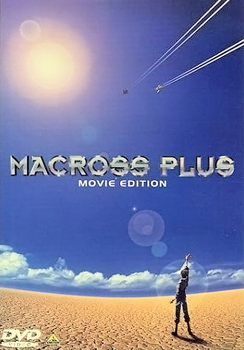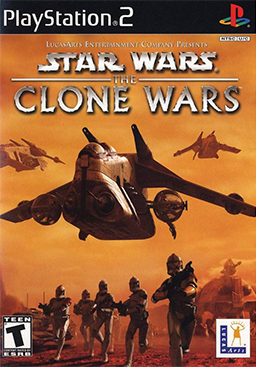Knight Rider is an American action crime drama television series created and produced by Glen A. Larson. The series was originally broadcast on NBC from September 26, 1982, to April 4, 1986. The show stars David Hasselhoff as Michael Knight, a sleek and modern crime fighter assisted by KITT, an advanced, artificially intelligent, self-aware, and nearly indestructible car. This was the last series Larson devised at Universal Television before he moved to 20th Century Fox Television.

Bandai Co., Ltd. is a Japanese multinational toy manufacturer and distributor headquartered in Taitō, Tokyo. Its international branches, Bandai Namco Toys & Collectables America and Bandai UK, are respectively headquartered in Irvine, California, and Richmond, London. Since 2006, Bandai is the toy production division of Bandai Namco Holdings. Between 1981 and 2001, Bandai was a manufacturer of video game consoles.

Macross Plus is a four-episode anime OVA and theatrical movie in the Macross series. It was the first sequel to the original Macross television series that took place in the official timeline. Plus was a groundbreaking combination of traditional cel and computer-generated animation at the time of its release, paving the way for the incorporation of more computer-generated imagery in Japanese animation.

Maple Town, also known as Maple Town Stories, is a 1986 Japanese anime series created by Chifude Asakura and directed by Junichi Sato. The series, animated by Toei Animation, consists of 52 half-hour episodes, which aired on TV Asahi in Japan from January 19, 1986, to January 11, 1987.

Gargoyles is an animated television series produced by Walt Disney Television Animation, in collaboration with Walt Disney Animation Japan for its first two seasons and Nelvana for its final, and originally aired from October 24, 1994 to February 15, 1997. The series features a species of nocturnal creatures known as gargoyles that turn to stone during the day. After spending a thousand years in an enchanted petrified state, the gargoyles are reawakened in modern-day New York City, and take on roles as the city's secret night-time protectors.

Dungeons & Dragons is an American animated television series based on TSR's Dungeons & Dragons role-playing game. It is a co-production of Marvel Productions and TSR, with the Japanese Toei Animation. It ran on CBS from 1983 through 1985 for three seasons, for a total of twenty-seven episodes.
Steve Perry is an American television writer and science fiction author.
Michael Gough is an American voice actor and musician. He is known for providing the voices of Deckard Cain in the Diablo series of video games, Gopher in the Winnie the Pooh franchise, The Carmine Brothers in the Gears of War series of video games, many Nords in The Elder Scrolls V: Skyrim, Ulrich Vogel in Call of Duty: Black Ops Cold War, Zorro in The New Adventures of Zorro, Captain James "Jim" Gordon in Batman: Arkham Origins, Jambalaya Jake in Darkwing Duck, Colonel Spigot in TaleSpin, Osmund Saddler in Resident Evil 4, Officer Pete in Doc McStuffins, Parasite in All-Star Superman, Scarecrow in Tom and Jerry and the Wizard of Oz and Shrek in many projects in the franchise where primary voice actor Mike Myers was unavailable.

Star Wars: The Clone Wars is a video game set in the Star Wars universe developed by Pandemic Studios and published by LucasArts for GameCube, PlayStation 2 and Xbox. It consists mostly of vehicular combat using clone warships, starfighters, speeder bikes and tanks, as well as missions where players can control Anakin Skywalker, Obi-Wan Kenobi, or Mace Windu on foot. The game is set in the Star Wars prequel trilogy era, with the first level encompassing the Battle for Geonosis from Episode II: Attack of the Clones. The game also features multiplayer modes for up to four players in splitscreen, or online via Xbox Live for the Xbox. It holds aggregate scores of 73 out of 100, 72 out of 100 and 71 out of 100 on review aggregator Metacritic for the GameCube, PlayStation 2, and Xbox, respectively.
GoBots is a line of transforming robot toys produced by Tonka from 1983 to 1987, similar to Hasbro's Transformers.
Machine Robo is a Japanese transforming robot toyline first released in 1982 by Popy, a division of Bandai, then later by Bandai proper. The franchise was marketed as Robo Machine in Europe and Machine Men in Australia. A large portion of these toys were exported to North America as part of Tonka's Gobots series, which began in 1983.

Conan and the Young Warriors is a 1994 American television animated series produced by Sunbow Entertainment and aired by CBS as a sequel to the animated series Conan the Adventurer, but featuring a different set of characters. The series was developed by Michael Reaves and directed by John Grusd. It lasted only for one season of 13 episodes.

Challenge of the GoBots is an American animated series produced by Hanna-Barbera, based on the GoBots toyline released from Tonka. The show was first broadcast in syndication on September 8, 1984, then the show joined the weekday/weekend programming block The Funtastic World of Hanna-Barbera on September 15, 1985. It was later rerun on the USA Cartoon Express.

Freedom Project is a Japanese promotional project by Nissin Cup Noodles for their 35th anniversary in 2006. As part of the project, the 7-part OVA series, titled Freedom, was commissioned with and designed by Katsuhiro Otomo serving as the character and mecha designer. The series is directed by Shuhei Morita, creator of the award-winning animation short Kakurenbo, and is authored by celebrated writer Dai Satō, Katsuhiko Chiba and Yuuichi Nomura. The series openly displays its sponsor's product placement in numerous scenes in which characters are shown consuming Nissin Cup Noodles.
Space Ironman Kyodain is a Japanese tokusatsu science fiction superhero television series. The show, like numerous others of its type and era, were produced as a joint effort between manga artist Shotaro Ishinomori and Toei Company producer Toru Hirayama. It premiered in 1976 and ran for 48 episodes. The show is well known for its strange plot and costume design, rapid-fire and purposefully disorienting editing, and unique, sometimes surreal, atmosphere. The late Yūsuke Natsu and Takeshi Sasaki starred as Skyzel and Grounzel respectively.
Captain Zed and the Zee Zone is a short-lived British-American television series, airing on CITV in the United Kingdom. When children go to sleep, it is Captain Zed's and his partner PJ’s job to prevent children from having nightmares in the dream zone. The 26-episode of 2 series was produced by Collingwood O’Hare for Scottish Television Film Enterprises in association with DIC Entertainment and distributed by HIT Communications PLC.
Popy (ポピー) was a Japanese toy manufacturer of the 1970s and early 1980s. The company was owned by Bandai. It was founded in 1971 and merged back into the parent company in 1983. The company is best known for its groundbreaking Chogokin robot figures.

Centurions is an American science fiction animated television series produced by Ruby-Spears and was animated in Japan by Nippon Sunrise's Studio 7. The series began in 1986 as a five-part mini-series and was followed with a 60-episode series. The series was story edited by Ted Pedersen and written by several authors, including prolific science fiction writers Michael Reaves, Marc Scott Zicree, Larry DiTillio and Gerry Conway.
Knight Rider is an American entertainment franchise created by Glen A. Larson. The core of Knight Rider is its three television series: the original Knight Rider (1982–1986) and sequel series Team Knight Rider (1997–1998) and Knight Rider (2008–2009). The franchise also includes three television films, a short-lived spinoff series, computer and video games, and novels, as well as KnightCon, a Knight Rider convention. Beginning with the original television series and continuing with the subsequent films and series, the franchise has developed a cult following and spawned many pop culture references.










